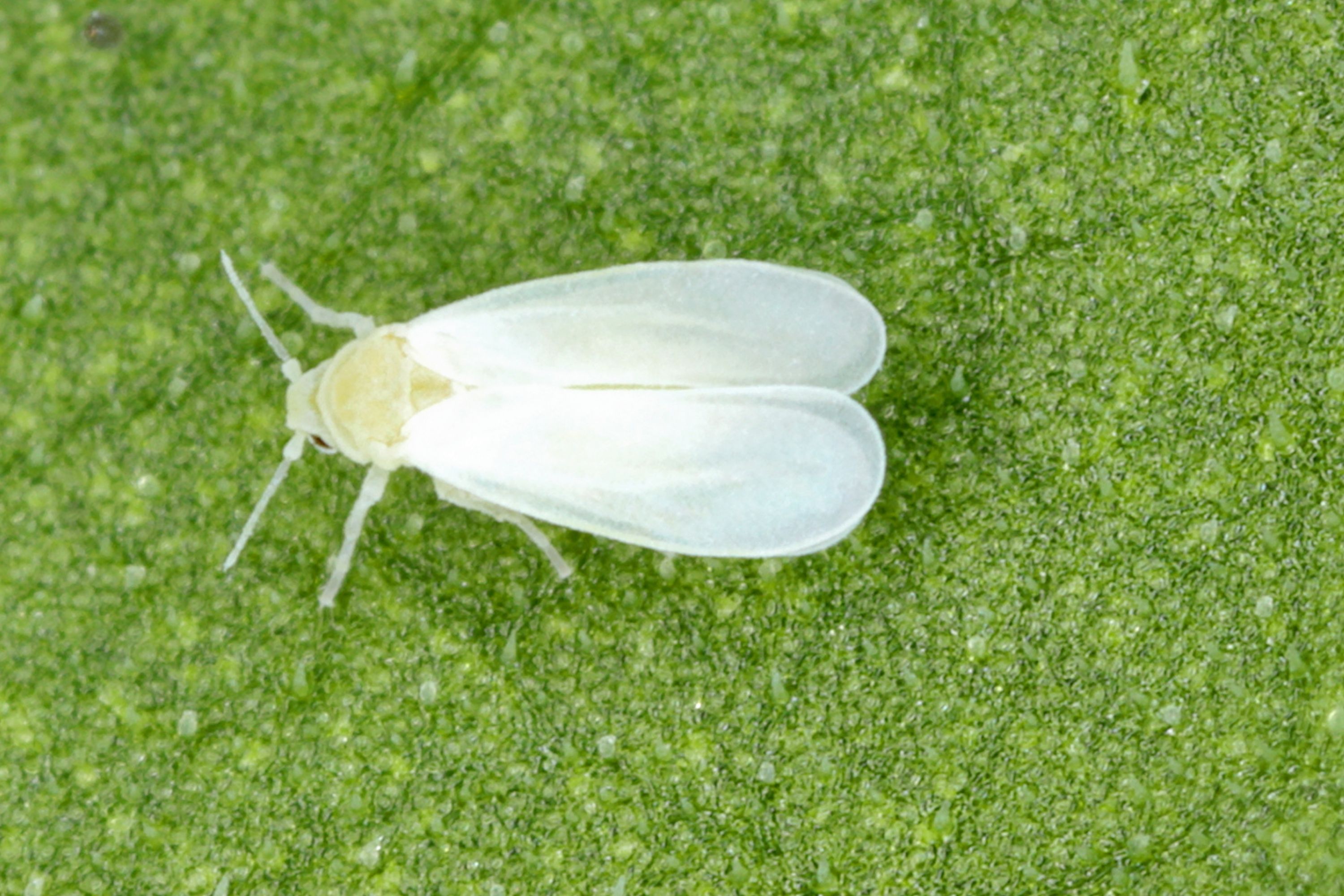Silverleaf whitefly
(Bemisia tabaci)

Description
The silverleaf whitefly (Bemisia tabaci, also informally referred to as the sweet potato whitefly) is one of several species of whitefly that are currently important agricultural pests. A review in 2011 concluded that the silverleaf whitefly is actually a species complex containing at least 40 morphologically indistinguishable species. The silverleaf whitefly thrives worldwide in tropical, subtropical, and less predominately in temperate habitats. Cold temperatures kill both the adults and the nymphs of the species. The silverleaf whitefly can be confused with other insects such as the common fruitfly, but with close inspection, the whitefly is slightly smaller and has a distinct wing color that helps to differentiate it from other insects. While the silverleaf whitefly had been known in the United States since 1896, in the mid-1980s an aggressive strain appeared in poinsettia crops in Florida. For convenience that strain was referred to as strain B (biotype B), to distinguish it from the milder infestation of the earlier known strain A. Less than a year after its identification, strain B was found to have moved to tomatoes, and other fruit and vegetable crops. Within five years, the silverleaf whitefly had caused over $100 million in damage to Texas and California agriculture industries. Female B. tabaci will lay 50 to 400 eggs ranging from 0.10 mm to 0.25 mm on the under part of leaves. Female whiteflies are diploid and emerge from fertilized eggs whereas male whiteflies are haploid and emerge from unfertilized eggs. Eggs are laid in groups, being small in size with dimensions of 0.2 mm wide and 0.1 mm in height. Eggs are initially whitish in color and change to a brown color near hatching, within 5 to 7 days. After hatching, the whitefly nymph develops through four instar stages. The first instar, commonly called a crawler, is the only mobile nymphal stage. The first instar nymph can grow to about 0.3 mm and is greenish in color and flat in body structure. The mobile nymph walks to find a suitable area on the leaf with adequate nutrients and molts into an immobile stage. The next three instars remain in place for 40-50 days, until molting into an adult. Silver exuvia, or shed skins are left on the leaves. The immobile instars appear opaquely white.
Taxonomic tree:







